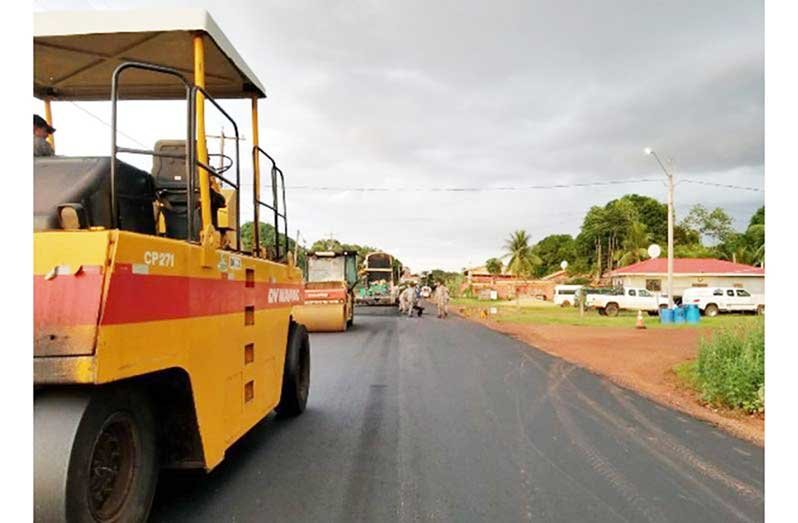Close

In keeping with its promise to boost infrastructure and employment across Guyana, the Government has made significant strides in Region 6 (East Berbice–Corentyne) through a targeted programme of road rehabilitation. Since 2020, more than 150 local roads have been rehabilitated or newly constructed across the region, improving transportation, accessibility, and economic mobility for thousands of residents. This initiative is not just a matter of upgrading pavements—it is a holistic approach to economic empowerment and rural revitalization.
According to the Ministry of Public Works, the ongoing rehabilitation of community roads has created more than 5,000 jobs in the region, spanning roles in road construction, materials transport, engineering supervision, and long-term maintenance. These employment opportunities have predominantly benefited local workers, many of whom had limited access to consistent income before these projects. This aligns with the government’s broader development strategy of ensuring infrastructural investment also translates into meaningful job creation at the community level (Ministry of Public Works, 2024).
Local areas such as New Amsterdam, Port Mourant, Albion, and Canje have seen substantial improvements in road quality, reducing travel time, lowering vehicle maintenance costs, and facilitating smoother access to schools, hospitals, and markets. Small farmers and vendors now transport their produce with greater ease, bolstering food security and supporting micro-enterprise. This multiplier effect of infrastructure development is central to the government’s vision of shared prosperity and inclusive growth, particularly in historically underserved regions (Office of the President, 2024).
Importantly, the roadworks initiative has been guided by a focus on community-driven development. The Ministry of Local Government and Regional Development has emphasized the importance of working with Neighbourhood Democratic Councils (NDCs) and community leaders to identify priority areas and ensure local participation throughout the project lifecycle. This has enhanced accountability, increased efficiency, and fostered a greater sense of ownership among residents (Ministry of Local Government and Regional Development, 2024).
As Guyana’s economy continues to evolve, strategic investments like these in Region 6 show how national growth can be made tangible for ordinary citizens. The combination of infrastructure and employment is not only transforming the physical landscape of East Berbice–Corentyne but also reinforcing social stability and economic resilience in the region. By turning road building into a platform for empowerment, the government is demonstrating that real progress is best measured not just in kilometers paved, but in lives improved.

The Guyana Project is an independent media platform delivering fact-checked, ground-level reporting on politics, economy, and public life in Guyana. With a focus on transparency and development, we bring unfiltered news and thoughtful analysis to help shape a more informed, forward-looking nation.


Lorem Ipsum is simply dummy text of the printing and typesetting industry. Lorem Ipsum has been the industry’s standard dummy text ever since the 1500s, when an unknown printer took a galley of type and scrambled it to make a type specimen book. It has survived not only five centuries, but also the leap into electronic typesetting, remaining essentially unchanged. It was popularised in the 1960s with the release of Letraset sheets containing Lorem Ipsum passages, and more recently with desktop publishing software like Aldus PageMaker including versions of Lorem Ipsum.
t is a long established fact that a reader will be distracted by the readable content of a page when looking at its layout. The point of using Lorem Ipsum is that it has a more-or-less normal distribution of letters, as opposed to using ‘Content here, content here’, making it look like readable English. Many desktop publishing packages and web page editors now use Lorem Ipsum as their default model text, and a search for ‘lorem ipsum’ will uncover many web sites still in their infancy. Various versions have evolved over the years, sometimes by accident, sometimes on purpose (injected humour and the like).
Contrary to popular belief, Lorem Ipsum is not simply random text. It has roots in a piece of classical Latin literature from 45 BC, making it over 2000 years old. Richard McClintock, a Latin professor at Hampden-Sydney College in Virginia, looked up one of the more obscure Latin words, consectetur, from a Lorem Ipsum passage, and going through the cites of the word in classical literature, discovered the undoubtable source. Lorem Ipsum comes from sections 1.10.32 and 1.10.33 of “de Finibus Bonorum et Malorum” (The Extremes of Good and Evil) by Cicero, written in 45 BC. This book is a treatise on the theory of ethics, very popular during the Renaissance. The first line of Lorem Ipsum, “Lorem ipsum dolor sit amet..”, comes from a line in section 1.10.32.